- What are Osaka’s red-light districts?
- Characteristics of Osaka’s Red-Light Districts
- Five Famous Red-Light Districts in Osaka
- For Foreign Visitors | Etiquette When Entering Osaka’s Red-Light Districts
- Three Recommended Nightlife Spots Around Osaka’s Red-Light Districts
- Three Alternative Nightlife Spots to Osaka’s Red-Light Districts
- Frequently Asked Questions About Osaka’s Red-Light Districts
- Enjoy Osaka’s Nightlife While Respecting the Rules and Showing Courtesy in the Red-Light Districts
What are Osaka’s red-light districts?
The red-light districts in Osaka are areas that carry on the history of licensed pleasure quarters that were once officially permitted to operate.
Today, under modern laws, they appear to run as restaurants or dining establishments on the surface.
These districts are places where uniquely Japanese culture and rules are deeply rooted, quite different from the entertainment districts found overseas.

Originally, the term “red-line” comes from police drawing red lines on maps to designate controlled areas.
After World War II, new laws were enacted, making the former type of operations illegal.
Many businesses nominally changed into “ryotei” (traditional Japanese restaurants) to preserve and pass on their history to the present day.
Osaka’s red-light districts are not simply night spots for amusement, but rather cultural spaces with complex historical backgrounds.
Gain proper knowledge and experience this deep, unique side of Osaka.
Characteristics of Osaka’s Red-Light Districts
The red-light districts in Osaka differ from those in other major cities and have the following characteristics.
- Soaplands do not exist.
- There are many delivery-based adult services, such as “delivery health” and “hotel health.”
Below, we explain the characteristics seen in Osaka’s red-light districts.
Soaplands do not exist.
In Osaka Prefecture, there are no soaplands like those represented by Tokyo’s Yoshiwara district.
There was a time when soaplands operated in Osaka.
However, the 1970 Osaka Expo and the 1990 International Garden and Greenery Exposition, along with other international events, led to a stronger crackdown on the adult industry as a whole.
Regulations on bathhouses with private rooms became particularly strict, and under Osaka Prefecture ordinances, it became virtually impossible to obtain new licenses for soapland operations.
Due to this governmental policy, establishments that once existed gradually disappeared.
As a result, even in Osaka—known as Japan’s second largest city—unlike other big cities such as Tokyo or Nagoya, there are currently no soaplands in operation.
There are many delivery-based adult services, such as “delivery health” and “hotel health.”
In Osaka, delivery-based adult services, such as “hotel health” and “delivery health,” are the mainstream.
These businesses do not have permanent storefronts but instead send women to hotels or private residences.
Because soaplands cannot operate under local ordinances, hotel health and delivery health services have developed as a unique part of Osaka’s nightlife culture.
In bustling areas like Umeda and Namba, there are many offices that dispatch women, and the convenient access keeps customers coming.
In fact, there are said to be more than 300 hotel health establishments and over 1,000 delivery health businesses in Osaka, making it one of the most competitive markets for delivery-based services in the country.
Because of the intense competition, service quality tends to be high, and the area is recognized as having customer-pulling power comparable to Tokyo.

If you want to enjoy Osaka’s nightlife, delivery-based adult services will be at the center of your options.
Five Famous Red-Light Districts in Osaka
In Osaka, there are several red-light districts that differ in history and size.
Among them, here are five particularly famous areas.
- Tobita Shinchi
- Matsushima Shinchi
- Shinodayama Shinchi
- Imazato Shinchi
- Takii Shinchi
Let’s take a closer look at each below.
Tobita Shinchi | The Largest District in Kansai
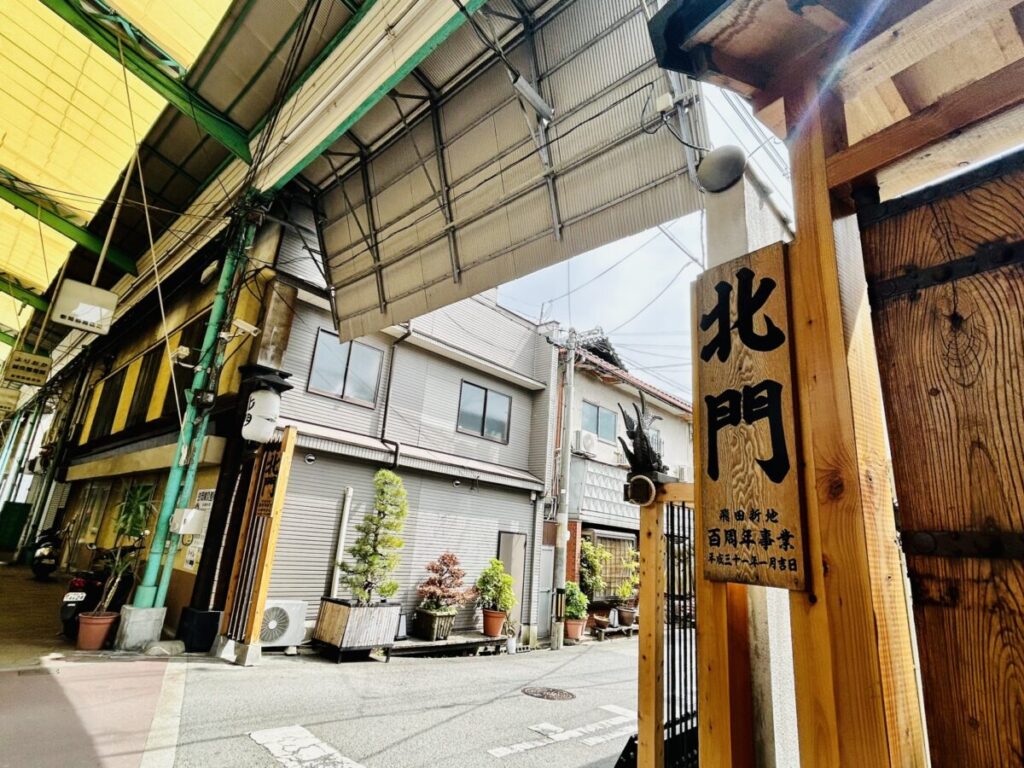
| Item | Details |
| Address | 3-1-13 Sanno, Nishinari-ku, Osaka-shi, Osaka Tobita Kaikan |
| Business Hours | 10:00 AM–12:00 AM(midnight) |
| Business Days | Monday–Sunday |
| Closed | Open year-round (no holidays) |
| Nearest Station | JR: Tennoji Station JR: Shin-Imamiya Station Osaka Metro Midosuji Line / Sakaisuji Line: Dobutsuen-mae Station Osaka Metro Tanimachi Line: Abeno Station |
Tobita Shinchi is one of Osaka’s most famous entertainment districts and is the largest and most well-known in the Kansai region.
Its name is recognized throughout Japan, and its unique culture and scenery remain deeply rooted even today.
Some streets from the Taisho era still remain, and there are registered tangible cultural properties such as “Taiyoshi Hyakuban” that still exist.
The style where women sit at the entrance and greet customers is a hallmark of Tobita Shinchi.
The women working there are said to be extremely attractive, with many resembling celebrities and models, drawing visitors from across the country.

Tobita Shinchi, with its blend of tradition and prestige, holds a special place in Osaka’s nightlife culture.
Matsushima Shinchi | The Second Largest District in Kansai
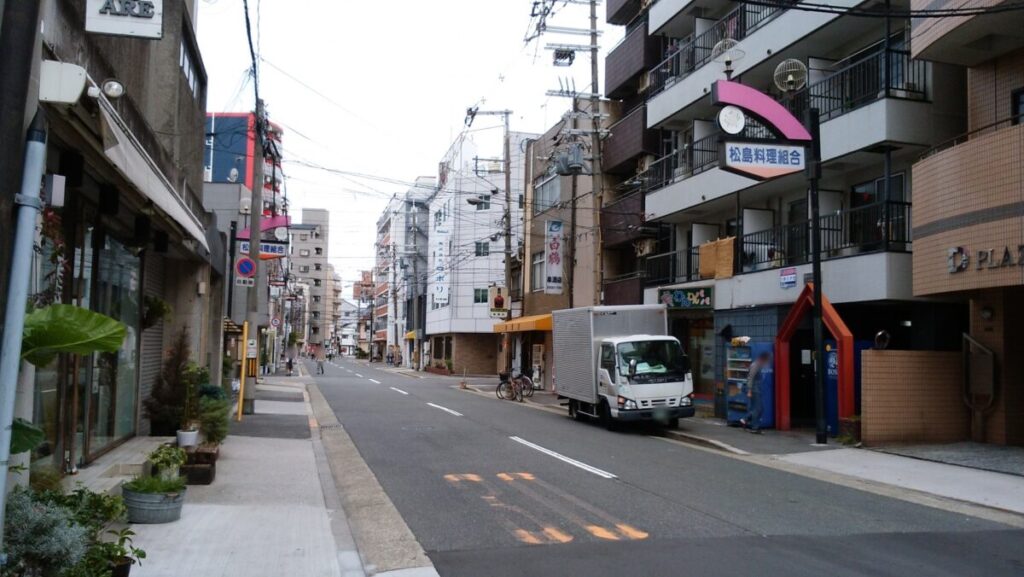
| Item | Details |
| Address | 1-chome, Kujo, Nishi-ku, Osaka-shi, Osaka Prefecture |
| Business Hours | 10:00 AM–12:00 AM(midnight) |
| Business Days | Monday–Sunday |
| Closed | Open year-round (no holidays) |
| Nearest Station | Osaka Metro Chuo Line / Hanshin Namba Line:Kujo Station |
Matsushima Shinchi is a famous district in Kansai that ranks second in scale after Tobita Shinchi.
It has excellent access from JR and subway stations and is close to Osaka’s Minami area, attracting many visitors.
Within the district, there are shops where women sit at the storefront, and similar to Tobita Shinchi, customers can choose by seeing their faces.
However, unlike Tobita, the buildings are somewhat modern, and the entire area has a calm atmosphere.
Many of the women working there give off a refined and gentle impression, rather than being flashy, and tend to be more mature in age.

For those who wish to spend a relaxed time in a tranquil setting, Matsushima Shinchi is likely the perfect choice.
Shinodayama Shinchi | An Area with the “Okiya” (Traditional House) System
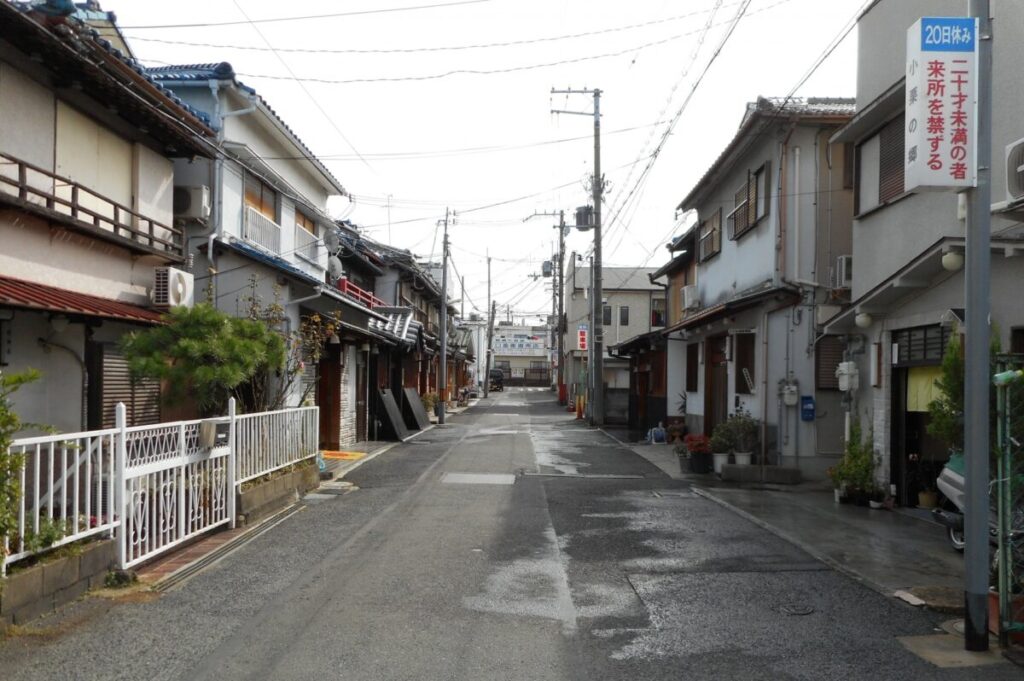
| Item | Details |
| Address | 1-chome, Saiwai, Izumi City, Osaka Prefecture |
| Business Hours | 10:00 AM – 12:00 AM(midnight) |
| Business Days | Monday–Sunday |
| Closed | 20th of every month |
| Nearest Station | JR Hanwa Line:Shinodayama Station |
Shinodayama Shinchi is a historic red-light district located in Izumi City in southern Osaka, where the traditional “okiya” (house) system still strongly remains.
It sits slightly away from the urban center, giving off a locally rooted, hidden-gem atmosphere.
The buildings and streets have a nostalgic charm, evoking the atmosphere of the Showa era.
At the same time, the women working there are generally younger, often including college students and “gyaru” (trendy, flashy girls), making the overall age range relatively low.
Compared to larger districts, many establishments have more affordable pricing, making them easy to use casually.

Shinodayama Shinchi is recommended for those who want to experience a truly local, lesser-known red-light district.
Imazato Shinchi | An Area with a Unique System

| Item | Details |
| Address | 3-chome, Shinimazato, Ikuno Ward, Osaka City, Osaka Prefecture |
| Business Hours | 12:30 PM – 11:00 PM |
| Business Days | Monday–Sunday |
| Closed | Every 3rd Wednesday of the month |
| Nearest Station | Kintetsu: Imazato Station Osaka Metro Imazatosuji Line: Imazato Station Osaka Metro Sennichimae Line: Shoji Station |
Imazato Shinchi is a well-known red-light district located in Osaka’s Ikuno Ward, characterized by a unique system that sets it apart from other areas.
It is conveniently located about a 5–10 minute walk from Kintetsu Imazato Station, making it easy to drop by.
In Imazato Shinchi, instead of women sitting out front, men tell the staff their preferred type, and the shop calls out a matching woman, which is the main style of service.
Because the interaction involves conversation, it’s a good fit for those who enjoy talking as part of the experience.
It’s also close to one of Japan’s largest Koreatowns, making it a place where you can experience the deep, unique culture of Osaka.

In Imazato Shinchi, you can have an experience quite different from the usual red-light districts.
Takii Shinchi | The Smallest and Most Niche District
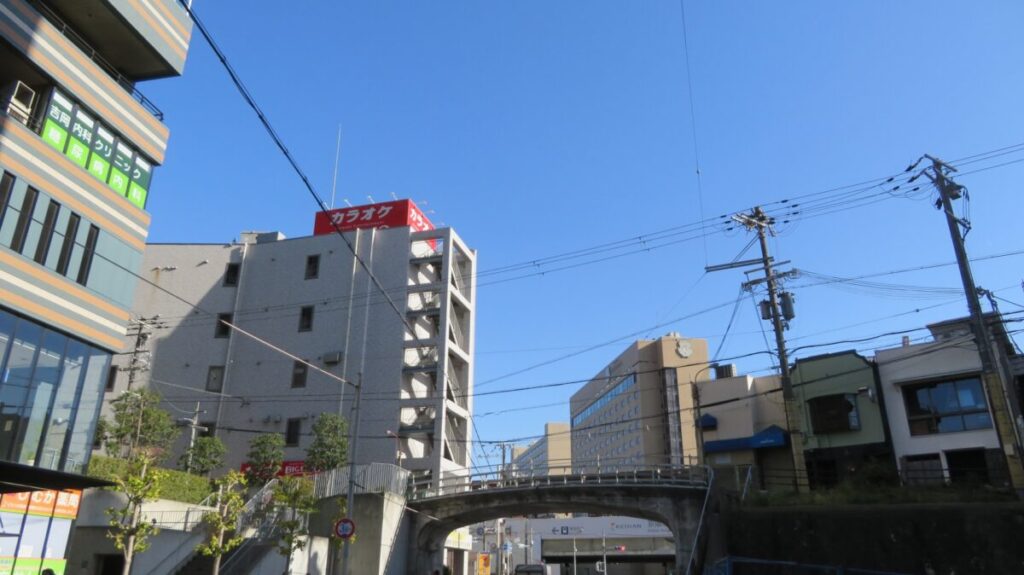
| Item | Details |
| Address | 2-chome, Takiinishimachi, Moriguchi City, Osaka Prefecture |
| Business Hours | 4:00 PM – 12:00 AM(midnight) |
| Business Days | Monday–Sunday |
| Closed | Open year-round (no holidays) |
| Nearest Station | Keihan Railway: Senbayashi Station, Takii Station Osaka Metro Tanimachi Line: Senbayashi-Ōmiya Station, Taishibashi-Imaichi Station |
Takii Shinchi is a red-light district located in Moriguchi City, Osaka Prefecture, and is the smallest among the five major red-light districts introduced here.
While not very well-known, it is cherished by some as a local, community-rooted place.
It lacks flashy attractions for tourists, but it has a calm atmosphere where you can spend a relaxed time.
The women working there are said to be generally older, but many possess a refined mature beauty, often called “bimajo” (beautiful witches), which has earned them a loyal following among more discerning customers.

In Takii Shinchi, you can feel the depth and diversity of Osaka’s red-light district culture.
For Foreign Visitors | Etiquette When Entering Osaka’s Red-Light Districts

When visiting Osaka’s red-light districts, you need to follow certain etiquette.
The following manners should be observed inside these districts.
- Do not take photos or videos.
- Stay quiet and behave calmly; do not cause disturbances.
- Do not block the street in groups.
- Do not stare at women.
- Do not point your finger at women.
- Do not follow or engage with street solicitors.
- Do not try to negotiate prices down.
- Do not walk with women inside the area.
It is most important to act quietly and with restraint when visiting.
Entering casually without caution can lead to unexpected trouble.

Respect the atmosphere of the area and always remember to act with courtesy.
Three Recommended Nightlife Spots Around Osaka’s Red-Light Districts
Osaka’s red-light districts are surrounded by many other attractive nightlife spots.
Below, we introduce three particularly recommended areas you can visit before or after exploring the red-light districts.
Let’s take a closer look.
Minami Area | One of Osaka’s Largest Entertainment Districts
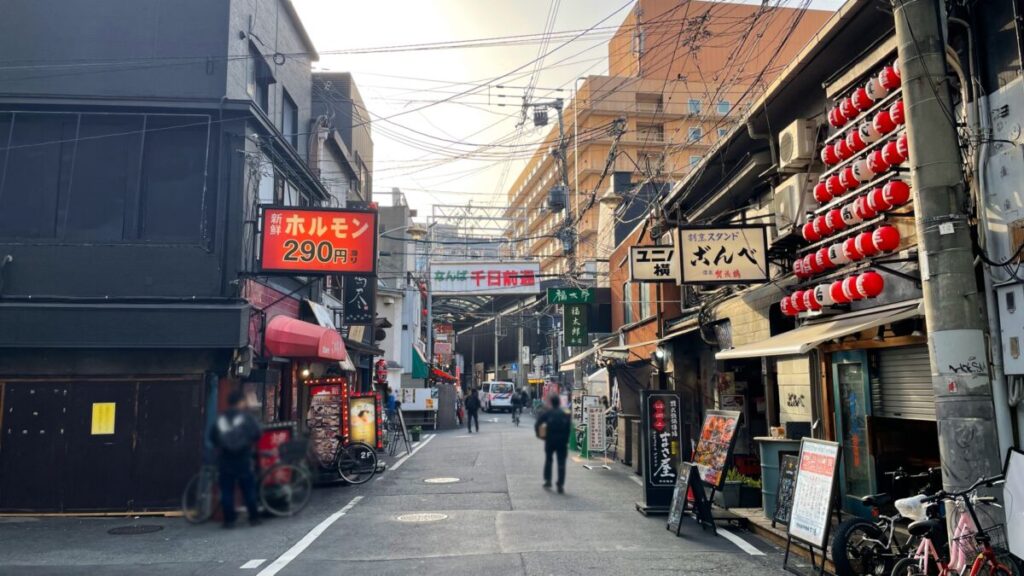
Minami is the busiest entertainment district in Osaka, covering the area from Namba to Shinsaibashi.
It offers everything from sightseeing and gourmet food to nightlife, with crowds flowing through day and night.
On Ebisu Bridge over the Dotonbori River, you’ll find the iconic Glico sign, a classic spot for commemorative photos.
In the Shinsaibashi-suji shopping arcade, America-mura, and numerous restaurants and bars, you can enjoy both sightseeing and entertainment.
There are also plenty of adult entertainment venues, with hotel health services concentrated in the Namba area and storefront health services more common toward the Shinsaibashi area.
The variety of genres is wide, including amateur, married women, cosplay, and more, and many establishments offer reasonable prices.

It’s also popular with business travelers and tourists visiting on business trips, with plenty of venues open until late at night.
Tennoji and Abeno Area | Rich in Tourist Attractions
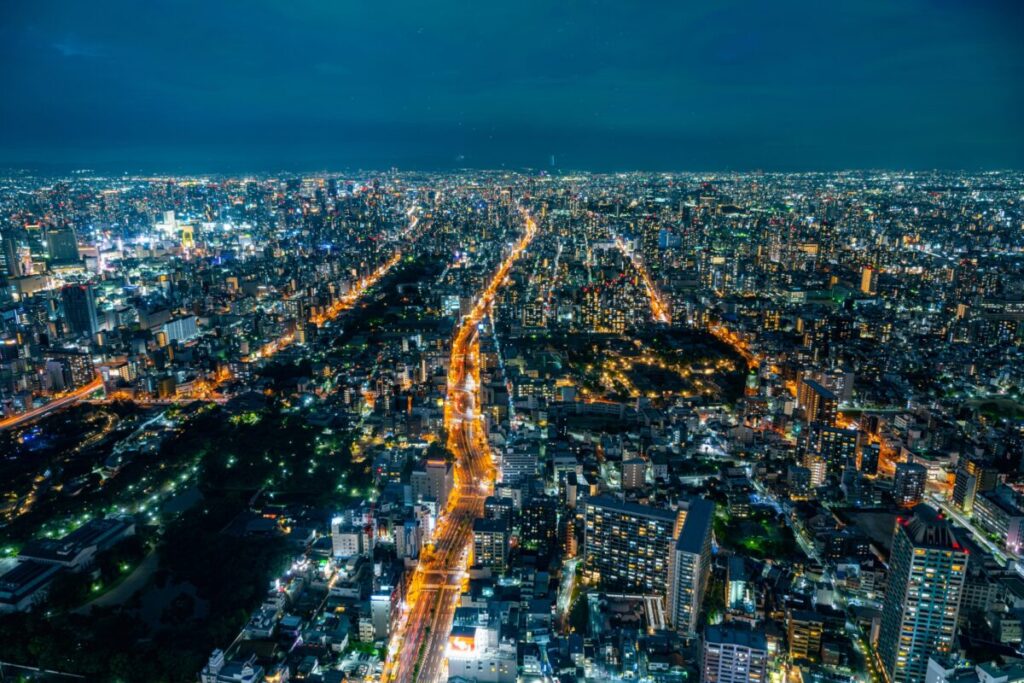
Tennoji and Abeno is a popular area that gathers many of Osaka’s most famous tourist attractions, including Abeno Harukas, Tsutenkaku, and Tennoji Zoo.
From the observation deck, you can enjoy the night view, and in Shinsekai you can savor kushikatsu (deep-fried skewers), with lively crowds day and night.
While the area has a strong image as a sightseeing spot, to the north of Tennoji Station, there is a concentration of love hotels, with many delivery-based adult services such as hotel health, delivery health, and erotic massage salons operating.

In particular, erotic massage services are abundant and popular with those seeking a combination of massage and relaxation.
Many places also offer relatively affordable prices, making them easy to visit casually while sightseeing.
It’s also close to Tobita Shinchi, adding to the area’s appeal as a place to experience Osaka’s diverse nightlife culture.
Nipponbashi Area | Famous as an Otaku District
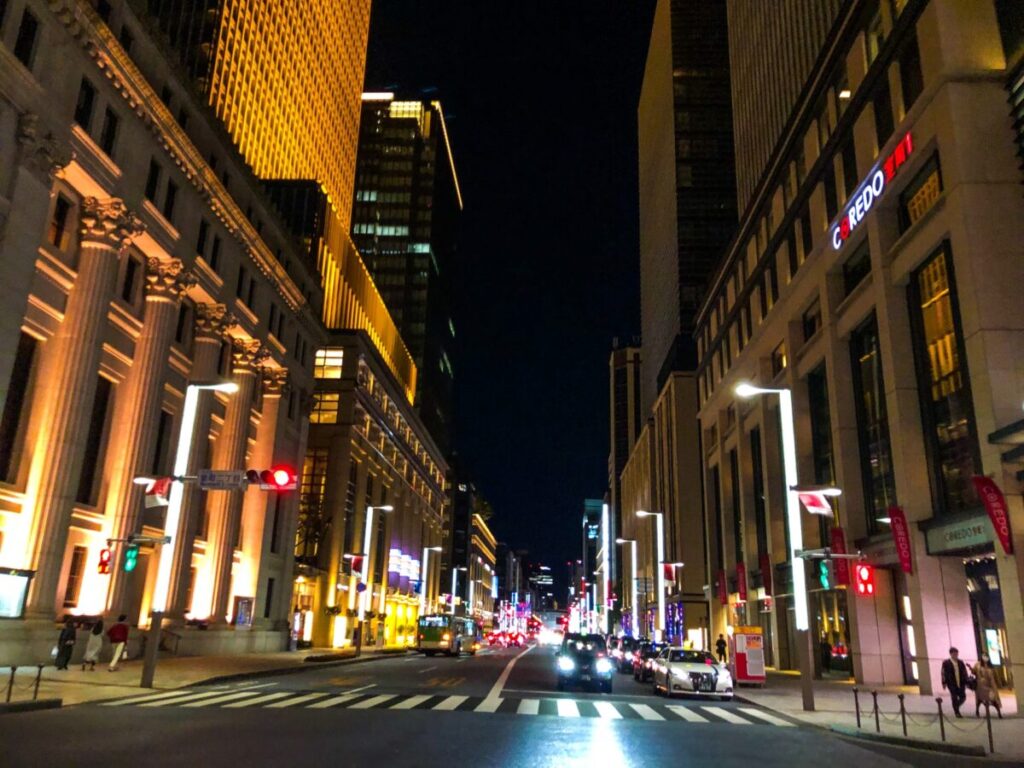
Nipponbashi, also known as Denden Town,is a famous electronics district and a hub for subculture, including anime, games, and figures.
It attracts many fans as an otaku mecca comparable to Tokyo’s Akihabara.
At night, the streets glow with anime signs and lights from maid cafes, creating an extraordinary atmosphere.
In addition, Nipponbashi is actually one of Osaka’s top hotel health (adult service) battlegrounds.
Around the 1-chome area, where hotels are concentrated, hotel health, delivery health, and erotic massage services are thriving.
In recent years, the number of “reflexology” and men’s massage parlors has increased, making it perfect for those seeking healing and relaxation services.
Because it is within walking distance from Minami, many people stop by while sightseeing or shopping.

From subculture fans to those seeking nightlife, it is a diverse area supported by a wide range of people.
Three Alternative Nightlife Spots to Osaka’s Red-Light Districts
Some people may be looking for more general nightlife spots beyond the red-light districts.
Osaka has many attractive nightlife areas where anyone can enjoy themselves safely.
In this section, we introduce three areas you can enjoy as alternatives to the red-light districts.
Kita Area | One of Osaka’s Top Nightlife Spots

Kita is one of Osaka’s largest terminal entertainment districts, centered around JR Osaka Station and Umeda Station, including the following areas:
- Umeda
- Kitashinchi
- Togano-cho
- Doyama-cho
Department stores and fashion buildings line the streets, and there is foot traffic until late at night.
Kitashinchi is known as an elegant entertainment district on par with Tokyo’s Ginza, filled with upscale clubs and cabarets.
On the other hand, Togano-cho and Doyama-cho areas are bustling with hotel health, delivery health, and storefront health services, making them some of Osaka’s top adult entertainment districts.
Doyama-cho is also one of Kansai’s largest and most famous gay towns.
While there are many high-end establishments, there are also plenty of reasonably priced venues, making it easy to choose freely depending on your budget and preferences.

With business, shopping, and adult entertainment districts all coexisting, Kita is a representative spot where you can enjoy Osaka’s nightlife from every angle.
Juso Area | A Traditional Entertainment District

Juso is just one train stop from Umeda, yet it still retains the atmosphere of Osaka’s traditional downtown.
At the station’s west exit, the arcade shopping street “Juso Sakaemachi” is lined with casual izakayas and old-style cinemas, creating streetscapes that evoke the feel of the Showa era.
Juso is also known as a rare red-light district in Osaka specializing in SM.
From soft to hardcore, a wide range of SM clubs gather around the station, making it a recommended area for those who want to enjoy more unusual types of play.
There are also many hotel health and delivery health establishments operating, and with plenty of hotels in the area, it is a convenient environment for adult entertainment users.

If you want to experience a different side of Osaka’s nightlife—one that contrasts with Umeda’s glitz—visit Juso.
Kyobashi Area | One of Osaka’s Leading Office Districts with Many Bars
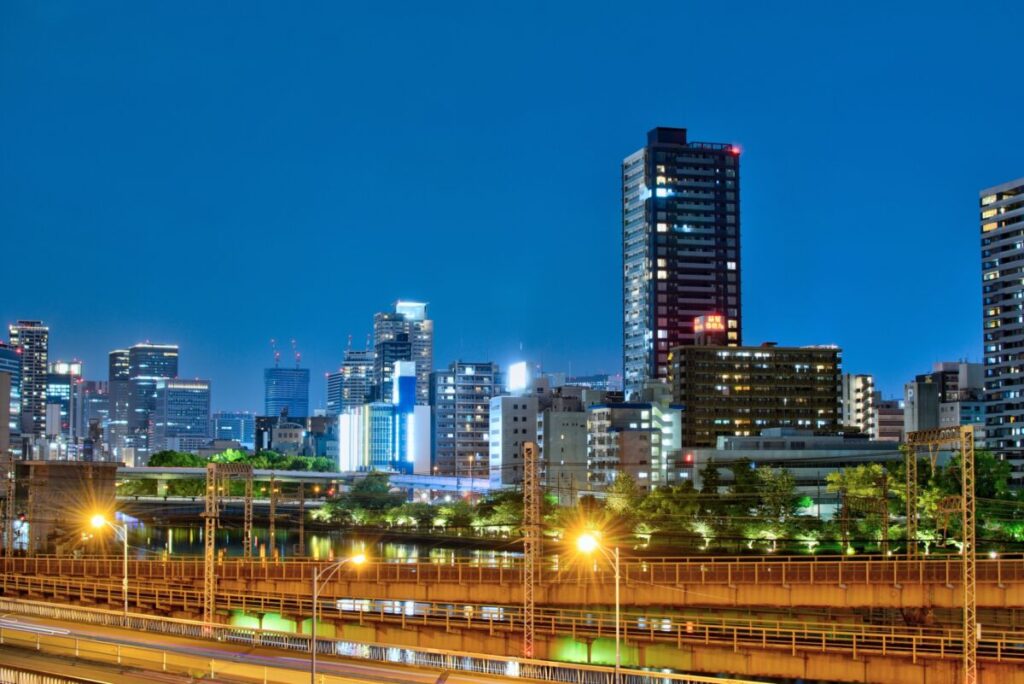
Kyobashi is a key transportation hub served by JR, Keihan, and Osaka Metro lines, and is one of the representative entertainment districts flourishing as the “Higashi” (East) of Osaka.
While lined with high-rise buildings, under the railway tracks you’ll find standing bars and retro eateries, creating a unique streetscape that still retains the feel of the Showa era.
Traditional cabarets and sexy cabaret clubs also remain near the station, popular especially with office workers on their way home.
In Higashinodamachi 4-chome near Kyobashi and south of the neighboring Sakuranomiya Station, one of Osaka’s top love hotel districts has developed.
Reception offices for hotel health and delivery health services are also concentrated in the area, known for its convenience.
Recently, men’s esthetic salons have been increasing, gaining support from those seeking relaxation services.

Kyobashi is perfect for those wanting to dive into the deep side of Osaka’s nightlife.
Frequently Asked Questions About Osaka’s Red-Light Districts
In this section, we answer frequently asked questions about Osaka’s red-light districts.
Clear up any uncertainties beforehand so you can enjoy the atmosphere while avoiding trouble.
Why is photography so strictly prohibited?
In Osaka’s red-light districts, photography is strictly prohibited from the standpoint of protecting the privacy of those involved.
If the faces of working women, customers, or local residents appear in photos, it can lead to leaks of personal information or trouble in personal relationships.
Unlike tourist spots, red-light districts are spaces where daily life and work coexist.
To preserve the order of the red-light district, taking photos should absolutely be avoided.
Even just raising your smartphone can look suspicious, so do not casually point your lens around.

Please be mindful and enjoy respectfully.
How much does it cost? Can I use a credit card?
In Osaka’s red-light districts, prices are often not disclosed beforehand, and the amount can vary greatly depending on the shop and the course selected.
As a rough guide, a basic 15- to 30-minute course typically costs around 10,000 yen, but fees can increase if you extend time or request additional services.
To avoid money troubles, always confirm the service details and price before entering.
All payments are handled in cash.
Credit cards and electronic payment methods are generally not accepted.

Prepare the necessary amount in advance so you don’t panic on site.
Do people speak English or other foreign languages?
In Osaka’s red-light districts, there are very few situations where English or other foreign languages are understood.
Most shops operate only in Japanese, and even basic words often do not get across.
Especially in small, individually run establishments, there usually are no staff who can speak foreign languages.
Even simple English may not be understood, and gestures or translation apps may not help communication go smoothly.
If service details are not clearly communicated, there is a risk of misunderstandings or trouble, which carries high risk for foreign visitors.

If you absolutely want to use these services, practice at least some basic phrases beforehand.
Enjoy Osaka’s Nightlife While Respecting the Rules and Showing Courtesy in the Red-Light Districts
Osaka’s red-light districts are special places with a deep history and unique culture.
To safely experience their distinctive atmosphere, follow the rules and act with respect.
This article introduced five of Osaka’s famous red-light districts, the manners you should observe, and alternative nightlife spots to explore.
Each area introduced has its own distinct character, when visiting, adjust to the atmosphere of the place.
Strict rules, especially those prohibiting photography, must be followed, as they show respect to the workers and the local community.
Additionally, there are also many bar districts outside the red-light areas, like Kita and Kyobashi, where anyone can enjoy themselves safely。

Use the information from this article to choose a spot that suits you and enjoy Osaka’s nightlife.
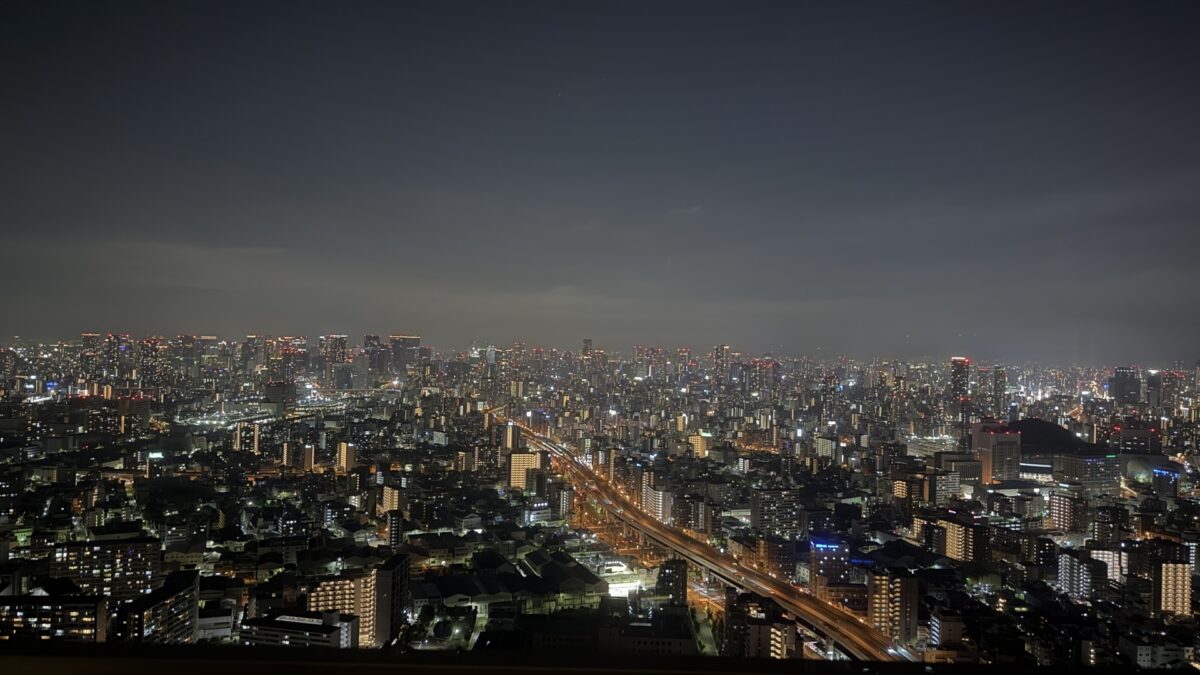



コメント